Not all particles from combustion are black and not all black particles are from
combustion. This file contains black particles that are from
combustion. There is another file for black particles that are not from
combustion and yet another for combustion particles that includes those
that are not black.
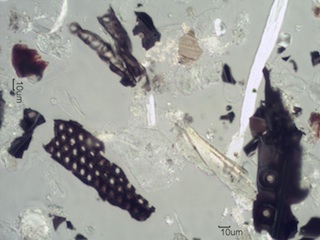
There are three species of charred wood in this image from a tapelift collected in a home near a major forest fire. 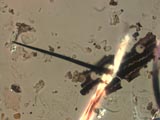
Charred grasses have many characteristic features. Trichomes, the hairs on the surface of the leaves, may turn black as organic contents are charred. Aligned stomata and circular trichsome bases are common. The surface cells on the leaves have denticulated edges. 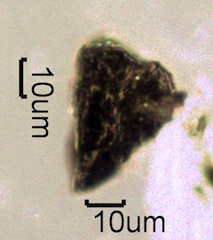
Charred paper may exhibit fibers in multiple orientations fractured across the fibers present. 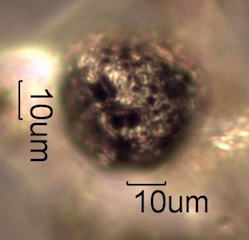
Black cenospheres are the result of the incomplete combustion of liquid fuel droplets injected into a combustion environment. Fuel-rich diesel engines are a common source. 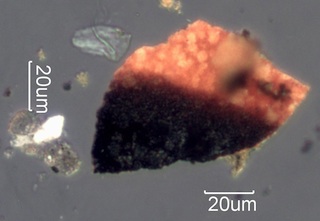
Charred paint is a flat black flake when charred. If more completely burned it may become a white flake of small titanium dioxide particles. Particles of an inorganic pigment may be present. 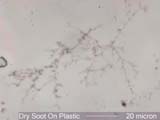
Dry soot particles are submicrometer to tens of nanometers in diameter. They often form fractal patterns on electrostatic surfaces. they are often the cause of "ghosting" behind picture frames hung on walls and at sites of turbulent or thermodynamic deposition. 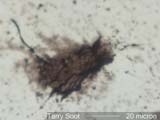
"Wet Soot" is a large agglomerate of soot particles held together by condensed organic compounds that are the pyrolysis products of the fires fuel. 

|

